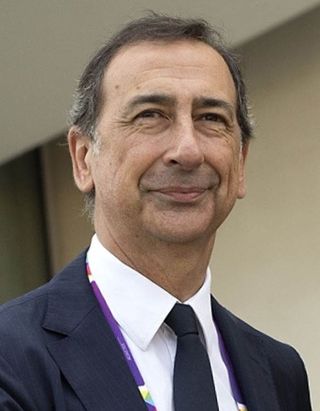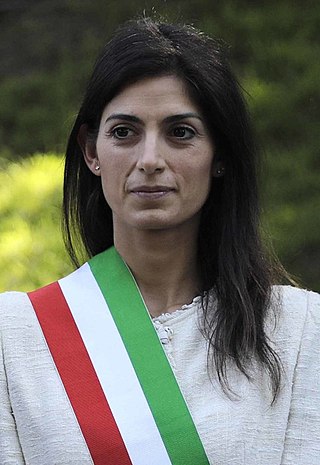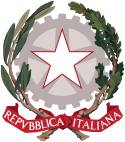Voting system
All mayoral elections in Italy in cities with a population higher than 15,000 use the same system.
Under this system voters express a direct choice for the mayor or an indirect choice voting for one of the parties of the candidate's coalition. If no candidate receives a majority of votes, the top two candidates go to a second round two weeks later. The coalition of the elected mayor is guaranteed a majority of seats in the council with the attribution of extra seats, but the majority bonus system is not adopted by the cities of Trentino-Alto Adige. If a Mayor resigns, dies or is ousted from office after more than half the municipal councillors stepped down, an early municipal election (for the Mayor and for all municipal councillors) is called.
The City Council is elected at the same time as the mayor. Voters can vote for a list of candidates and can express up to two preferences for candidates of said list. In case of two preferences, they must be given to candidates of both genders. Seats are the attributed to parties proportionally, and for each party the candidates with the highest number of preferences are elected.

The South Tyrolean People's Party is a regionalist and mostly Christian-democratic political party in South Tyrol, an autonomous province with a German-speaking majority in northern Italy. Dieter Steger has been party leader since 2024, while party member Arno Kompatscher has been governor of South Tyrol since 2014.

Lega Alto Adige Südtirol, whose official name is Lega Alto Adige Südtirol per Salvini Premier, is a regionalist political party active in South Tyrol. The party was a "national" section of Lega Nord (LN) from 1991 to 2000 and has been the regional section of Lega per Salvini Premier (LSP) in South Tyrol since 2020.

The 2011 Italian local elections were held on 15–16 May, with a second round on 29–30 May. In Italy, direct elections were held in all 1,177 municipalities and 11 provinces: in each municipality (comune) were chosen mayor and members of the City Council, in each province were chosen president and members of the Provincial Council. Of the 1,177 municipalities, 30 were provincial capital municipalities and only 105 had a population higher than 15,000 inhabitants.

The 2010 Italian local elections were held on different dates; most on 29–30 March concurrently with the Regional elections.

The 2013 Italian general election was held on 24 and 25 February 2013 to determine the 630 members of the Chamber of Deputies and the 315 elective members of the Senate of the Republic for the 17th Italian Parliament. The centre-left alliance Italy Common Good, led by the Democratic Party (PD), obtained a clear majority of seats in the Chamber of Deputies thanks to a majority bonus that effectively trebled the number of seats assigned to the winning force and narrowly defeated the centre-right alliance of former Prime Minister Silvio Berlusconi in the popular vote. Close behind, the new anti-establishment Five Star Movement of comedian Beppe Grillo became the third force, well ahead of the centrist coalition of outgoing Prime Minister Mario Monti. In the Senate, no political group or party won an outright majority, resulting in a hung parliament.

Italia. Bene Comune was a centre-left political list and electoral alliance in Italy created to stand at the 2013 Italian general election. It de facto ended on 28 April 2013, with PD's new leader Enrico Letta forming a grand coalition cabinet.

The 2014 Italian local elections were held on 25 May, with a second round on 8 June. In Italy, direct elections were held in 4,086 municipalities: in each municipality (comune) were chosen mayor and members of the City Council. Of the 4,086 municipalities, 29 were provincial capitals and 243 had a population higher than 15,000 inhabitants.
The centre-left coalition is a political alliance of political parties in Italy active under several forms and names since 1995, when The Olive Tree was formed under the leadership of Romano Prodi. The centre-left coalition has ruled the country for more than fifteen years between 1996 and 2022; to do so, it had mostly to rely on a big tent that went from the more radical left-wing, which had more weight between 1996 and 2008, to the political centre, which had more weight during the 2010s, and its main parties were also part of grand coalitions and national unity governments.

The 2015 Italian local elections were to be held on 31 May, with a second round on 14 June, concurrently with the Regional elections. In Italy, direct elections were held in 1,063 municipalities: in each municipality (comune) were chosen mayor and members of the City Council. Of the 1,603 municipalities, 15 were provincial capitals and 120 had a population higher than 15,000 inhabitants.

Municipal elections were held in Milan on 5 and 19 June 2016 to elect the Mayor and the 48 members of the City Council, as well as the nine presidents and 270 councillors of the nine administrative zones in which the municipality is divided, each one having one president and 30 councillors.

Snap municipal elections were held in Rome on 5 and 19 June 2016, to elect the Mayor of Rome and 48 members of the City Council, as well as the fifteen presidents and more than 400 councillors of the 15 municipi in which the municipality is divided.

The 2017 Italian local elections were held on Sunday 11 June. If necessary, a run-off vote was held on Sunday 25 June. The term of mayors and councils will last five years, unless an early election is triggered.

The Trentino-Alto Adige/Südtirol provincial elections of 2018 took place on 21 October 2018.

The 2018 Italian local elections were held on different dates; most on 10 June, with a second round on 24 June. In Italy, direct elections were held in 720 municipalities: in each comune were chosen mayor and members of the City Council. Of the 783 municipalities, 21 were provincial capitals and only 112 had a population higher than 15,000 inhabitants.

The 2019 Italian local elections will be held on different dates; most on 26 May 2019, together with the 2019 European election, with a second round on 9 June. Direct elections will be held in 3,843 out of 7,918 municipalities; in each of these, mayor and members of the City Council are going to be elected. Of the 3,841 municipalities, 30 are provincial capitals.

The 2020 Italian local elections were held on different dates; they were originally scheduled to take place in May 2020, together with the 2020 regional elections, with a second round on June, but they were delayed on 20 and 21 September with a second round on 4 and 5 October due to the coronavirus pandemic in Italy. Direct elections were held in 1,172 out of 7,904 municipalities; in each of these, the mayor and the members of the City Council are going to be elected. Of the 1,172 municipalities, 18 are provincial capitals.

The municipal elections in Naples took place on 3 and 4 October 2021. The incumbent Mayor of Naples was Luigi de Magistris of Democracy and Autonomy, who won the 2016 Naples municipal election.

The 2022 Italian local elections were held in various Italian local communities on 12 June 2022, with a run-off round on 26 June. Local elections in Trentino-Alto Adige/Südtirol were held on 15 May, with a second ballot on 29 May, while local elections in Aosta Valley on 29 May, with a second ballot on 12 June. Elections took place in 980 out of 7,904 municipalities, 26 of which were provincial capitals. Mayors and city councils were elected for the ordinary five-year terms, lasting till 2027.









